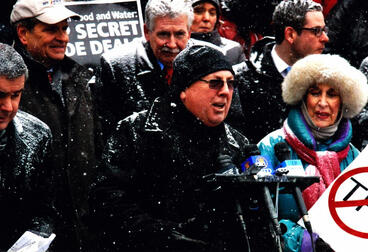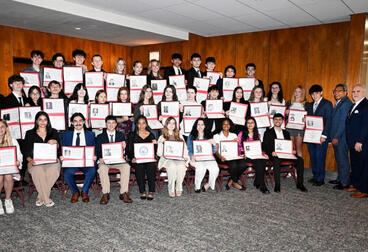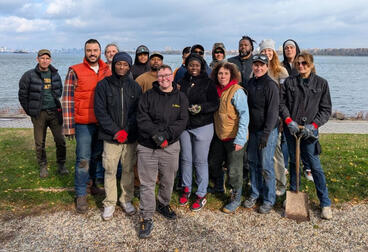In the late 19th century New York City was competing with big cities like Chicago, Paris and London to be the most advanced city in the modern world. In order to bring potable water to its growing population, New York had built a water aqueduct from the reservoir in the upstate Catskill Mountain range that would land in a reservoir on 42nd Street and 5th Ave., the site that would eventually become the New York City Public Library. Advancements such as water traveling from outside to where it is needed was the type of progressive thinking that would eventually bring electrical power to New York City.
Progressive innovations would continue to improve lighting equipment for New York City. As history writes, in the beginning, private and communal lighting worked by candles produced from animal fat and from lamps fueled by whale oil as it did everywhere around the Old World. Next for New York and the competing cities would be the gas lighted street lamps that would illuminate the streets and interior gas light chandeliers for the wealthy in the exponentially expanding metropolis. Then there was the tinkerer, inventor, genius Thomas Edison and his team in a lab in New Jersey that would invent the light bulb that would transform illumination taking first New York City and then the world into the modern age.
The year was 1882, master electricians John D. Hatzel and Joseph Buhler along with Thomas Edison and his staff worked tirelessly to regulate electrical power to feed the Edison light bulb that would be tested out on the blocks around the Pearl St. Power Station, the first power house that centrally harnessed Direct Current power driven by a series of steam powered generators to electrically light the nearby street lights and businesses around the Pearl St. Station. Before the Pearl St. Power Station, electricity came from individual on-site generators. The generators at the Pearl Street Station were run by “direct coupled steam engines” called “Jumbo” machines.
In 1884 after finishing their work with å_Edison, Hatzel and Buhler formed a partnership and started what would become the oldest electrical contracting business in America with over 132-years in business.
Electricity and its provision to the general public began as a private enterprise. It was not until President Franklin Delano Roosevelt, as part of his New Deal Program in 1935 that would eventually help pull the United States out of the Great Depression, created the Rural Electric Administration. The new government agency would oversee grand projects such as the Tennessee Valley Authority (TVA) that would bring electric to the areas that private electrical power providers claimed was too expensive. The investment to run transmission cable carrying power to remote areas was not worth the investment so in stepped the U.S. government. A national power grid would be built. The result was that light provided by electricity would no longer be a luxury afforded only by big cities and the rich, but going forward electricity would become essential to life.
One hundred and fifty years after the inauguration of the first United States president, General George Washington, the 1939 New York’s World’s Fair would bring the future of the globe to Flushing Meadows New York. And who better qualified to perform the construction for the Fair’s central theme “Building The World of Tomorrow” but the members of the Trades Unions of New York City and especially of Local 3. From the Amalgamated Lithographers to Hotel and Restaurant Employees International Alliance; from the International Photographers of the Motion Picture Industry to the International Brotherhood of Teamsters, Chauffeurs, Stableman and Helpers every trade and profession was organized and part the spectacular exhibition. And it was the job of the electricians of Local 3 to take control of the load side from the utility, Con Edison, by installing banks of switchgear and for multiple distribution centers. It was up to workers of Local 3 to roll out and terminate the cables that would power and transmit signal for the over two hundred TV screens strategically placed around the park. The World’s Fair ran for two summer seasons from April through to October of 1939 and 1940.
Date Posted


